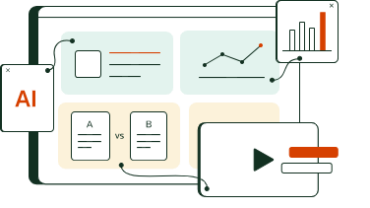The latest disruption hitting corporate trade and supply chain teams comes barely on schedule from the World Customs Organization (WCO) — and has created headaches for all companies engaged in international trade.
The WCO updates the Harmonized Commodity Description and Coding System, commonly known as the Harmonized System (HS), every five years. Although the expected changes are disruptive, they are typically manageable. However, the WCO’s last-minute release of revisions, which became effective on Jan. 1, 2022, had global repercussions. Each country that uses the HS was delayed in adopting the changes into their own tariff schedules, causing importers and exporters to question which version of tariff to use and when.
Why the HS is important to international trade
More than 200 countries use the HS to categorize trade products in over 5,000 commodity groups. Customs authorities rely on the HS to collect trade tariffs, guide tax policy, establish rules of origin, and collect data on virtually every aspect of cross-border trade.
“It’s essentially the cornerstone of international trade,” said Brandon Jones, a global trade solution consultant at Thomson Reuters. “Without it, businesses wouldn’t be able to clear customs when importing components or, on the outbound side, when exporting their finished goods.”
As anticipated, the latest round of changes are significant: 351 sets of amendments covering a wide range of products and product groups. The HS 2022 updates are intended to keep pace with technological advances, changing trade patterns, environmental considerations, health and safety issues, the fight against terrorism, and the need to accommodate various international conventions.
Importers are required to declare the correct HS code for goods in every entry that they make globally — and failure to do so has serious implications. Global trade teams need robust strategies, processes, and tools to ensure their companies are in compliance with these new rules and avoid supply chain disruptions, said Suzanne Offerman, senior product marketing manager for ONESOURCE Global Trade Management at Thomson Reuters.
Offerman, Jones, and Virginia Thompson, senior product manager for Thomson Reuters trade management solutions, recently discussed the implications of the HS 2022 changes during an episode of the Tax & Tech Talks Trade Edition podcast. They discussed the biggest HS changes that global trade professionals should monitor, best practices for assigning HS numbers to products, the compliance and business implications of misclassifications, and technology solutions that can ensure classification changes are made accurately and efficiently.
_____________________________________________________________________________________________
Watch the free on-demand podcast video 2022 World Customs Organization Changes and How Technology Can Help Global Traders to learn strategies and tools to mitigate supply chain disruption.
_____________________________________________________________________________________________
The costs of global trade non-compliance
On the podcast, Offerman, Jones, and Thompson describe the costs of misclassifying goods. “The ‘what can go wrong’ falls into two buckets: compliance problems and business problems,” Thompson explained.
On the compliance side of the equation, for example, an importer who misclassifies a product may pay the wrong duties or declare that a product is eligible for a Free Trade Agreement (FTA) when it is not — potentially leading to penalties being levied. In extreme cases in which errors are repeated, importers can be prohibited from importing goods for a period.
Business impacts can be even more dire. Misclassifying a product may obscure the fact that it’s subject to an anti-dumping duty, for example, and missing that designation can cost a company hundreds of thousands or even millions of dollars (depending on the value of the importations over time). Often, the goods have already been sold when the mistake is discovered, leaving no way to pass on costs to customers. Overcoming classification obstacles remain a top challenge for trade professionals internationally.
And the risk is not limited to customs. HS classifications often trigger controls that other agencies place on imported and exported products. In this way, an incorrect HS number can cause a company to violate rules for testing, licenses, permits, and data elements that are unrelated to customs obligations. In the worst case, misclassifications can temporarily or indefinitely shut down a company’s cross-border operations.
How to get HS classifications right to reduce global supply chain disruptions
Monitoring and updating HS codes is a complex and time-consuming task — and getting it wrong can be costly — so companies need to implement processes and utilize global trade management tech tools to execute the changes accurately and efficiently.
“As soon as a given country updates their tariff schedule with the new, fully-qualified numbers, it’s critical to know that you have a way of seeing that in your technology solution,” Jones said. “The key to managing the updates as accurately as possible under a tight timeline is to utilize a technology that incorporates reliable and broad content with software functionality that allows for visibility and management of the re-classification process.”
Thompson noted that this is only half the battle for global trade teams. “You also need to know which of your part numbers are classified with current numbers that are changing, and you need tools that show which numbers are the right choice for re-classification,” she said. “Finally, since many companies have so many products, you need an innovative and intelligent classification solution that offers ways to manage re-classification en masse with templates, spreadsheets, and other tools.”
Stay on top of global trade management by exploring other related resources on this topic:










